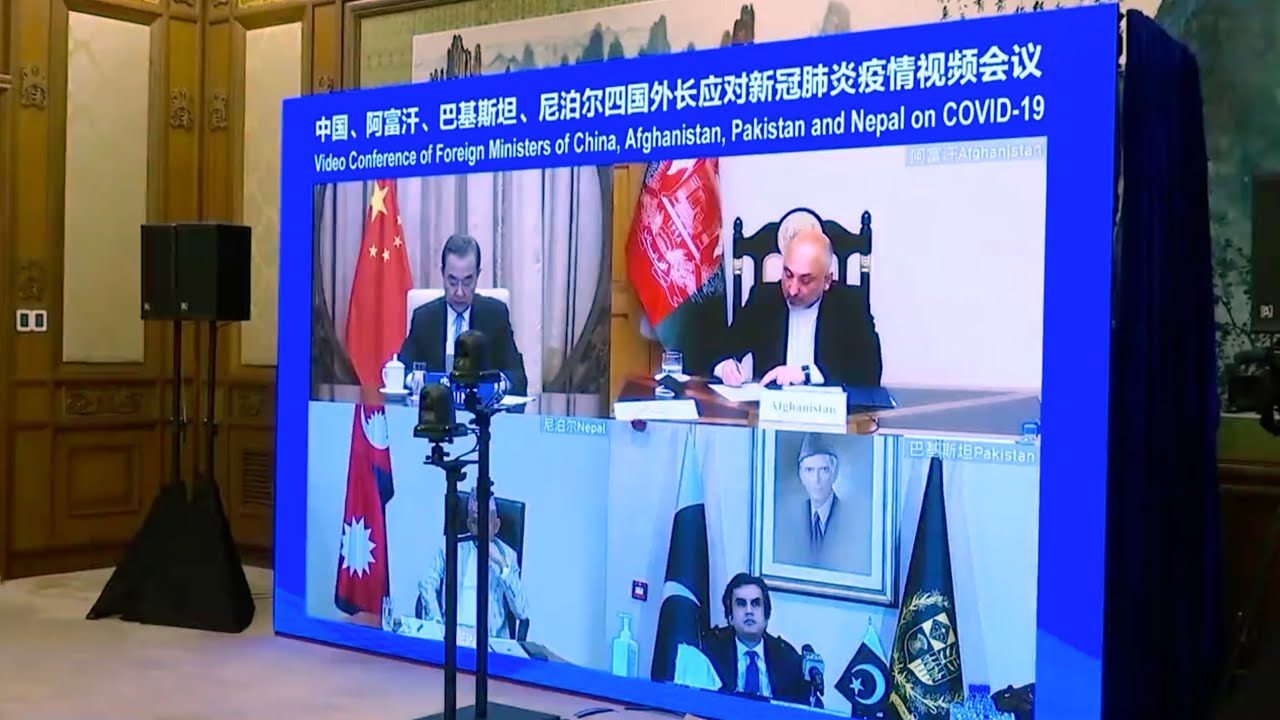
During the “four countries meet” with Afghanistan, Nepal and Pakistan, China has urged them to join forces to overcome the Covid-19 crisis and lend support to the Belt and Road Initiative (BRI), including the China-Pakistan Economic Corridor (CPEC).
Afghanistan, Nepal and Pakistan are three of the poorest Asian countries who share a border with India and have dismal infrastructure to tackle with the Wuhan Virus.
The virtual meeting was presided by China’s Foreign Minister Wang Yi who said that the four states should work together to extend CPEC to Afghanistan.
The online meeting was attended by Pakistan’s Minister of Foreign Affair Shah Mahmood Qureshi and Minister of Economic Affairs Khusro Bakhtiar. Foreign Minister of Nepal Pradeep Gyawali and acting Foreign Minister of Afghanistan Hanif Atmar were present in the meeting.
Wang, who is one of China’s senior-most diplomats and a State Councillor, said the four states should give “full play to geographic advantages, strengthen exchanges and connections between the four countries and Central Asian countries, and maintain regional peace and stability”, according to a statement in Mandarin issued on Monday (July 27) night.
China is literally in control of roads in Pakistan and now has set eyes on extending CPEC to Afghanistan.
The reason for that is, Afghanistan is a mountainous landlocked country in Central Asia and shares borders with Tajikistan, Turkmenistan, and Uzbekistan to the north, Iran in the west, Pakistan in east and south. It also shares a border with India along the Durand line.
The small stretch of border is along the Gilgit Baltistan province presently in Pakistan-Occupied-Kashmir.
It is very clear that the cover for this meeting was to discuss the Covid-19 pandemic, but the real reason was to develop a consensus to promote BRI and CPEC.
The meeting also comes in the light of the months-long India-China border standoff which has still not defused completely. India is currently going through a period of strained ties with Nepal. Foreign policy experts in India are seeing this meeting as a clear intent of China to isolate India with all its neighbours.
During the meeting, Wang stressed upon the importance to “actively promote the construction of the China-Pakistan Economic Corridor and the trans-Himalayan three-dimensional interconnectivity network, support the extension of [CPEC] to Afghanistan, and further release the regional interconnection dividend”.
By ensuring India is not part of this meeting, China has declared its intent to drive a wedge between our relationship with Nepal and Afganistan.
China’s foreign ministry made it clear that Beijing wants to develop a more permanent cooperation mechanism with the three South Asian countries and not just working together to counter the pandemic.
As the Americans leave Afghanistan, China now wants to play a bigger role and will have the full support of “Iron Brother” Pakistan who is still providing material support to the Taliban.
There are already credible reports that it is the Chinese embassy in Katmandu who is running the show for Prime Minister K P Sharma Oli and that has led the strained relations between India and Nepal.
During the meeting, Wang said, the four countries under the principle of anti-epidemic cooperation, should open up “fast channels” and “green channels” for personnel and logistics as soon as possible.
There were talks on joint prevention and control in border areas, along with standard operating procedures for epidemic notification, prevention, management and control, he said.
Wang abundantly made it very clear that the environment was right and any post-pandemic recovery and economic development, between the four countries, should be the joint construction of BRI. He also said it is important to promote and start the resumption of key cooperation projects to help maintain the stability of industrial and supply chains and create new economic growth points in the digital field.




